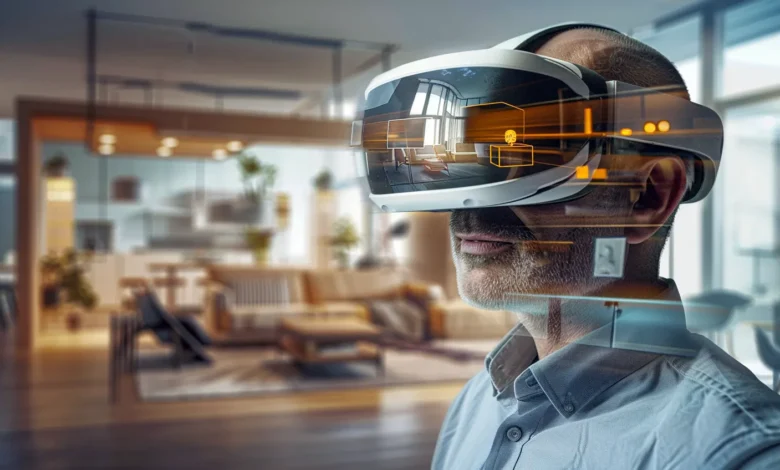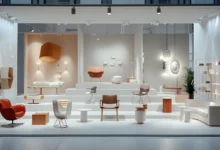Digitization of the furniture industry- The future is now interio works

In the digital age, which permanently changed the face of many industries, the furniture sector could not be missing. Digitization, ie the process of implementing modern technologies for every aspect of activity, has become a key factor that determines the competitiveness and innovation of companies. In industry that has been based on traditional and traditional production methods for centuries, the introduction of digital tools, such as advanced design software, automation of production lines or digital management systems, opens completely new possibilities.
Thanks to digitization, furniture manufacturers can not only increase production efficiency and precision, but also respond better to the needs of the changing market and the expectations of the customer. Digitization enables furniture companies to offer high quality products that are also innovative and adapted to the individual needs of customers.
Digitization of processes – Change of paradigm in production

The digitization of production processes in the furniture industry introduces new standards for efficiency, precision and personalization. In the digital age, advanced IT technologies and automation are the basis on which companies build their competitiveness and innovation.
Automation of production lines
Automation of furniture production is not limited to the use of industrial robots. Contemporary production lines are equipped with advanced systems that integrate different processes – from cutting and processing materials to definitive assembly and quality control. These systems are designed to maximize performance with minimal waste of raw materials and energy. Automatisering also makes flexible response to changes in orders, which is crucial in the era of the growing demand for personalized furniture products.
ERP systems and data integration
The most important element of the digitization of production processes is the implementation of ERP systems that enable effective management of the resources of the company. ERP systems integrate all important operational functions – from shopping and stock management, to production to customer sales and service. Thanks to data centralization, furniture companies can better anticipate market trends, optimize production processes and lower costs. Data integration also ensures a more personalized approach to the customer, which offers products that are tailored to individual needs and preferences.
Advanced technologies for monitoring and quality control
The digitization of production processes also introduces new methods for monitoring and quality control. Video and sensory systems on the production line ensure continuous tracking of the quality of produced elements, which detects defects at an early stage of production. This significantly reduces the costs associated with complaints or the need to process defective products. Thanks to the remote monitoring, the factory management can constantly analyze production efficiency, even without physically present in the factory.
The digitization of production processes is more than just the use of modern machines. In the first place, it is a change in thinking about production – from the traditional process to a highly integrated, effective and flexible process, capable of rapid adaptation to changing market requirements and customer expectations. This is the basis on which future generations of furniture companies will build up their competitive advantage.
Modern technologies in design

The modern furniture industry is increasingly used advanced technological tools that change traditional design methods. Computer -Assisted (CAD), Virtual Reality (VR) and Augmented Reality (AR) are just a few of the tools that significantly influence efficiency and creativity in this area.
Computer -Assisted Design (CAD)
CAD is one of the most important tools in modern furniture design, making accurate and detailed three -dimensional models possible. Thanks to CAD, designers can experiment with different materials, shapes and sizes, where they quickly adjust and adjust projects to the requirements of the customer. This software also makes virtual tests of product strength and functionality possible, so that the risk of errors in the production phase is minimized and shortens the time that is required to launch the product to the market.
Visualization in Virtual (VR) and Extended Reality (AR)
VR and AR revolutionize the method of presentation and sale of furniture. Designers and customers can “introduce” to virtually designed spaces, making projects a better understanding and assessment of projects possible. This is especially useful with interior design, where recipients can see what individual equipment elements will look like in their houses or offices. These technologies also become a sales instrument – thanks to AR, customers can see what the new furniture looks like in their space using mobile applications, which considerably facilitates the purchasing process.
3D -Printing – Prototyping and production
3D printing opens new possibilities in prototyping and producing furniture. This technology ensures rapid creation of prototypes and short -order productions, which are ideal for individual orders and experimental projects. 3D printing makes the production of complex geometry possible that would be difficult or impossible to perform according to traditional methods. It is also a way to reduce the production man, because the material is added a layer per layer, which minimizes its consumption compared to traditional methods for cutting or milling.
These modern technologies in the design not only increase the creative possibilities of designers, but also influence the final quality and functionality of produced furniture. They are the key to creating innovative solutions that meet the growing expectations of consumers looking for unique and personalized products.
E-commerce and personalization-the future of furniture sales

In the digital age, the development of e-commerce triggers a revolution in the way consumers buy products, including furniture. The availability of online shopping platforms and the possibilities to personalize products significantly influence the expectations and behavior of customers. Furniture companies that effectively integrate these elements with digital sales channels can considerably increase their competitiveness on the market.
E-commerce platforms in the furniture industry
E-commerce platforms for the furniture industry not only give easy access to a wide range of products, but also offer tools that help customers make thoughtful choices. Advanced filters, search engines and product configurators can quickly find furniture that meet specific criteria, such as style, dimensions or material. For furniture manufacturers, e-commerce opens the door to the global markets, where they can offer their products without considerably reducing the need for physical presence in a certain region, which considerably lowers the costs of entering new markets.
Personalization of products
Personalization has become one of the most important trends in the furniture industry. Thanks to digital technologies, customers can now not only choose the color or structure of upholstery, but also adjust the dimensions and functions of furniture, so that they perfectly match their space and needs. For manufacturers, this means a greater complexity of production processes, but also the possibility to offer extra value, which can significantly increase customer satisfaction. The integration of CAD and VR technology with e-commerce platforms makes visualization of real-time changes possible, so that customers are confidence that the ordered product will meet their expectations.
Impact of personalization on production
The implementation of personalization options requires flexibility of furniture companies in production processes and effective logistics management. Production to order means that production lines should be able to change quickly between different projects, which is possible thanks to automation and advanced production management systems. This approach not only increases production efficiency, but also minimizes waste, which is beneficial for both economic and ecological point of view.
The introduction of personalization and e-commerce in the furniture industry is an important change in the way in which companies approach production and sales. These modern approaches not only facilitate the adaptation of products to the individual needs of customers, but also set new challenges related to the management of complex processes and consumer expectations. In response to these challenges, companies must constantly improve their processes and technologies to maintain competitiveness on the market.
Summary

The digitization of the furniture industry is not only a reaction to contemporary technological and market challenges, but also opens the door to the future in which innovation and adaptation to the needs of the customer play an important role. The introduction of modern technologies in design, production and management processes, considerably transforms traditional working methods and offers furniture manufacturers a chance of a significant increase in their operational efficiency and competitiveness in the world market.
As the technology progresses, adaptation to digitization becomes an inevitable necessity for companies that want to maintain their position and develop on an ever -demanding market. FIRMS, which effectively integrates digital tools into their processes, will not only be able to optimize existing processes, but also approach the needs of their customers innovativelyOffering products that are of both high quality and personalized.
Finally, digitization is no longer just an option, but a necessity that can decide on the future of the company in the furniture industry. How companies take up the challenge of adaptation to new realities will determine their further possibilities of growth and success. By accepting openness for changes and investing in modern technologies, Polish furniture companies not only have the opportunity to survive, but also to lead in creating the future of industry, which will always have a central place in the life and work of each of us.








